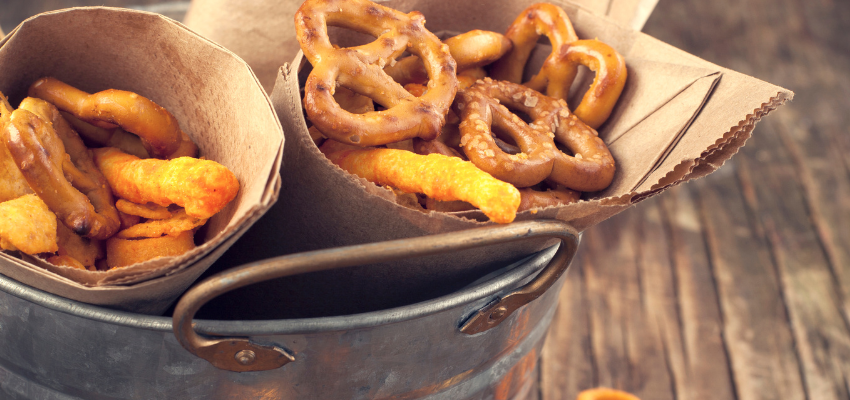Key Topics
In the foodservice sector, crunchiness is not just a texture attribute, it’s a powerful sensory trigger. The “crunch factor” has a strategic role in food experience, backed by quantitative data, emotional insights and recent case studies. From product development to communication, we’ll see how crunchiness influences perceived freshness, customer satisfaction and the overall value of a dish or snack.
The Strategic Value of Crunchiness in Foodservice
In today’s competitive foodservice landscape, where differentiation increasingly relies on experience, crunchiness stands out as a signal of quality. Its relevance goes beyond flavor or mouthfeel—it communicates freshness, craftsmanship, and attention to detail.
A crunchy texture suggests the product is freshly prepared, fried to order, or well preserved. For snacks or breaded foods, the crunch hints at artisanal processes or premium recipes. In some cases, it becomes part of the product’s identity, like a perfectly baked crust or a well-executed fry.
From a positioning standpoint, crunch can be leveraged as a sensory branding element: a recognizable cue that sticks in memory and aligns the promise of quality with the consumer’s real perception.
What the Data Say: Crunch Means Quality
According to Ingredion, over 79% of consumers associate the acoustic and tactile sensation of crunch with product authenticity and freshness.
A study conducted in South Korea and Japan found that over 70% of snacks on the market feature a hard or crunchy texture, proving that crunch is a key sensory driver. This connection between sensory stimuli and emotional response makes crunch a valuable asset for chefs, R&D teams and foodservice brands.
Cultural differences also play a role: in Asian markets, extreme crunchiness is often seen as a sign of vitality and product strength. In Southern Europe (including Italy), a more balanced crunch is associated with elegance and expertise.

Product categories where crunch really matters
There are food categories where crunch is not optional: it’s essential for product appeal, like salty snacks, fried foods, breaded items, tacos, and oven-baked crusts. When crunch is missing, consumers perceive poor quality or staleness.
Corn NUTS®: consumers want crunch, but not too much
The Corn NUTS brand refreshed its snack line by launching a semi-puffed variety—preserving crunch but making it more approachable. This move was based on a critical insight: some consumers were avoiding the product because it was too crunchy. By balancing intensity with accessibility, the brand expanded its audience while maintaining its sensory identity.
Crunch for Gen Z snackers
Crunch is central to Gen Z preferences: 76% of them snack at least once a week.
Campbell’s Foodservice launched air-fried chips on the market like Kettle Brand’s Himalayan Salt Chips meeting the demand for light but satisfying snacks, ideal for coffee shops and casual dining venues. Brands like Cape Cod and Snyder’s of Hanover also offer crunchy, boldly flavored or nostalgic snacks that appeal to younger consumers. These cases show how innovation in texture and crunch is key to engaging the next generation in foodservice.
R&D and Packaging Implications for B2B
In the B2B world, crunch can and should be designed from the earliest stages of product development. This involves defining:
-
the type of crunch desired (dry, explosive, granular)
-
the time crunch should be retained post-cooking or during display
-
compatibility with preservation and service methods
Packaging is also crucial. It must protect the texture from moisture and condensation. Some brands are even experimenting with packs that amplify the crunch sound when opened, turning it into a sensory ritual.
Finally, structured sensory testing (e.g., trained panels, qualitative mapping, rapid prototyping) helps R&D teams validate the perception of crunch, not only in lab conditions but also during real-life service.
Bakery Foodservice BAKERY & PIZZA PRODUCTS Sigep Vision trends
















